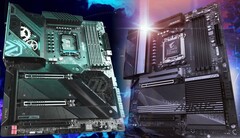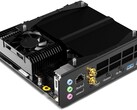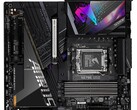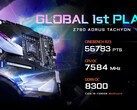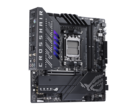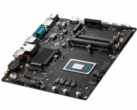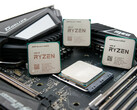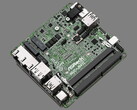A snippet of AMD and Intel motherboard sales data from MindFactory has been shared by TechEpiphany, who has compared recent statistics with some taken from near the end of 2020. There are two things to note: Intel has much greater share at the moment and there is a huge difference between the average selling price (ASP) of November 2020 and March 2023. The first point can be explained away simply, as AMD and Intel motherboard sales share will obviously fluctuate depending on new CPU releases. In November 2020, Ryzen 5000 processors were the must-have purchase, whereas Intel looks healthier now thanks to a combination of Raptor Lake being LGA 1700-compatible and PC builders loath to buy both a new Ryzen 7000 chip and an AM5 socket-supporting board.
What might be more interesting to most, especially in the current financially desperate climate, is the astonishing rise in ASP for both Intel and AMD motherboards. At the end of 2020, buyers were paying on average €140.78 (US$153) for a board from a partner that supported an Intel chip and €120.50 (US$131) for a motherboard that had the appropriate socket for an AMD part. By March 2023, those ASPs had risen to a whopping €197 (US$214) for Team Blue boards and €163 (US$177) for Team Red boards. The incredible increase stands out more when you look at them as percentages: +35% for AMD and basically +40% for Intel (39.93%). It’s worth noting here that it’s partners such as MSI, Gigabyte, and ASRock that set the prices for their products, although of course it does not help when the semiconductor companies introduce a new CPU socket, too.
It’s possible to put those percentage rises into further perspective by comparing them with inflation rates in the US and Europe, and there is quite a slap in the face coming for those DIYers who want to put together their own system with specific parts but cannot afford all of the components. Average inflation for Europe has been 1.95% per year (1997-2023), but in 2022 this hit 9.9%. There is a similar picture for the US, which had inflation rates between 0% and 3.1% over the last decade or so and then streaked to 8% by 2022. If motherboard prices had followed inflation, then using historical and current rates (compounded from 2021 to 2023) for both Europe and the US would leave board ASP at around €145-147 (US$157-159) for AMD-based units and €169-172 (US$183-187) for Intel-supported parts.
In other words, overall motherboard ASPs have outstripped even surging inflation rates by 10-16% compounded over the relevant time period, which might help explain reported falling sales and highlight the current need for cheaper options.
Mainboard sales end of year 2020
— TechEpiphany (@TechEpiphany) March 28, 2023
vs. lastweek:
AMD: 2285 units sold, 65.38%, ASP: 163
Intel: 1210, 34.62%, ASP: 197
AMD revenue: 371408, 60.87%
Intel: 238766, 39.13%
crazy https://t.co/QvSNuEs6IA


